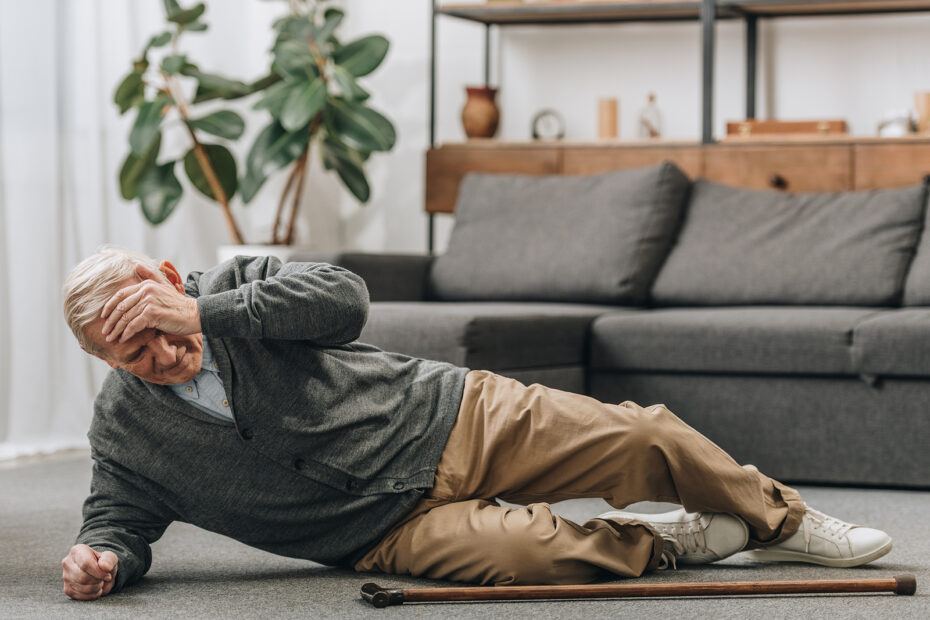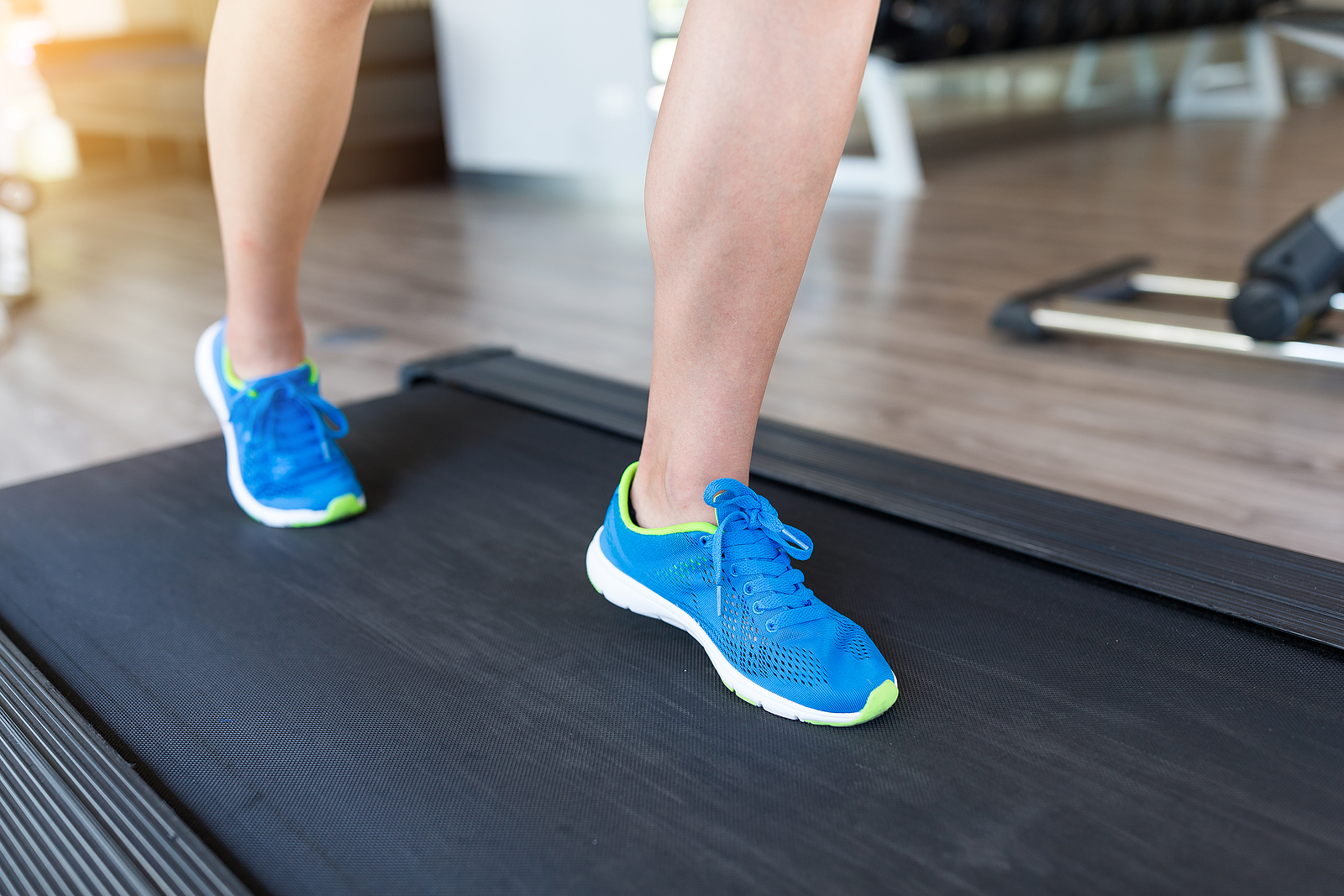Falls are one of the leading causes of injury and loss of independence among seniors.
And while factors like reduced balance, vision issues, and environmental hazards are well-known contributors, the role of medications in increasing fall risk often goes under-appreciated.
Which is unfortunate, considering so many commonly prescribed medications can impact balance, coordination, or cognition, making falls more likely for seniors.
But knowing which medications can increase fall risk (and what to do about it) can go a long way to improving safety.
This guide will help seniors and caregivers understand which medications are associated with an increased risk of falling, how these drugs work physiologically, and what seniors and caregivers can do to reduce these risks.
How Medications Contribute to Fall Risk
There are a lot of medications that can increase fall risk, but there are generally only a few different ways in how they do it.
Basically, these medications can affect the body in ways that compromise balance, coordination, and alertness.
These effects might include:
- Sedation or Drowsiness: Slowing reaction times and impairing balance.
- Dizziness or Lightheadedness: Common with medications that affect blood pressure or inner ear function.
- Impaired Judgment or Confusion: Resulting from medications that impact the central nervous system (CNS).
- Muscle Weakness: Some drugs can lead to fatigue or decreased muscle strength.
- Orthostatic Hypotension: A sudden drop in blood pressure upon standing, causing dizziness or fainting.
Any of the above side-effects can significantly increase fall risk for seniors, but folks taking multiple medications may experience several of the above conditions.
And worse yet, medications can actually interact with each other, exacerbating or adding to any potential side effects that increase fall risk.
This is why polypharmacy (taking 5 or more medications at the same time) is considered such a potent fall risk factor.
Common Medications That Increase Fall Risk for Seniors
| Medication Type | Examples | How They Increase Fall Risk |
|---|---|---|
| Sedatives and Hypnotics | Diazepam (Valium), Lorazepam (Ativan), Zolpidem (Ambien) | Cause drowsiness, slowed reaction times, and impaired balance. |
| Antidepressants | Sertraline (Zoloft), Amitriptyline, Duloxetine (Cymbalta) | Can lead to dizziness, sedation, and orthostatic hypotension, especially in initial adjustment periods. |
| Antihypertensives | Metoprolol (Lopressor), Lisinopril, Furosemide (Lasix) | May cause drops in blood pressure, leading to dizziness or fainting when moving from sitting to standing. |
| Antipsychotics | Haloperidol (Haldol), Olanzapine (Zyprexa), Risperidone (Risperdal) | Cause sedation, motor skill impairment, and balance changes. |
| Opioid Pain Relievers | Morphine, Oxycodone (OxyContin), Hydrocodone (Vicodin) | Induce dizziness, sedation, and confusion, especially at higher doses or combined with other CNS depressants. |
| Anticholinergics | Diphenhydramine (Benadryl), Oxybutynin (Ditropan), Tolterodine (Detrol) | Lead to drowsiness, confusion, and blurred vision due to acetylcholine suppression. |
| Hypoglycemic Agents | Insulin, Glipizide, Glyburide | May cause hypoglycemia, resulting in dizziness, weakness, and potential loss of consciousness. |
| Diuretics | Furosemide (Lasix), Spironolactone | Can cause dehydration and electrolyte imbalances, leading to dizziness and muscle weakness. |
| Muscle Relaxants | Cyclobenzaprine, Carisoprodol | Cause sedation and impair motor coordination. |
| Anti-Seizure Medications | Phenytoin, Gabapentin | May lead to dizziness, drowsiness, and gait instability. |
Certain medications are more likely to increase fall risk due to their effects on the body.
Below is a quick description of these drug categories and their effects on the body, as well as a few popular examples:
1. Sedatives and Hypnotics
These medications suppress activity in the brain, promoting relaxation or sleep.
While effective for conditions like anxiety and insomnia, they often cause drowsiness, slowed reaction times, and impaired balance.
All of which can significantly increase the likelihood of falls for people taking these meds.
Common Examples:
- Benzodiazepines: Diazepam (Valium), Lorazepam (Ativan), Alprazolam (Xanax)
- Non-benzodiazepine sleep aids: Zolpidem (Ambien), Eszopiclone (Lunesta)
2. Antidepressants
Antidepressants alter brain chemicals to improve mood.
They are commonly used to treat conditions like depression and anxiety and they can be quite effective at treating these issues.
However, they often cause side effects like dizziness, drowsiness, or orthostatic hypotension (particularly during the initial adjustment period).
Common Examples:
- Selective Serotonin Reuptake Inhibitors (SSRIs): Sertraline (Zoloft), Escitalopram (Lexapro)
- Tricyclic Antidepressants (TCAs): Amitriptyline, Nortriptyline
3. Antihypertensives
These medications are used to help lower blood pressure to manage hypertension (high blood pressure) and other heart conditions.
However, sometimes they are too effective and can have unwanted side-effects.
For example, sudden drops in blood pressure when standing (orthostatic hypotension) can lead to lightheadedness or fainting when changing positions.
There are a lot of medications that fall under this category, as well as several different mechanisms in how these meds affect blood pressure.
- Common Examples:
- Beta-blockers: Metoprolol (Lopressor), Atenolol (Tenormin)
- ACE inhibitors: Lisinopril, Enalapril
- Diuretics: Furosemide (Lasix), Hydrochlorothiazide
4. Antipsychotics
These medications are used to manage conditions like schizophrenia or severe mood disorders.
They suppress brain activity, which can cause sedation, impaired motor skills, and changes in balance – all of which can significantly increase fall risk in seniors.
Seniors taking any of these meds should be monitored closely for any unwanted side-effects.
- Common Examples:
- First-generation: Haloperidol (Haldol)
- Second-generation: Olanzapine (Zyprexa), Risperidone (Risperdal)
5. Opioid Pain Relievers
Opioids have gained a lot of attention for their addictiveness and ease of abuse, but that’s not to say they don’t still play an important role for patients that legitimately need pain relief.
But it’s important to take care when using these potent pain relievers.
Opioids work by binding to receptors in the brain and spinal cord to block pain signals.
This makes them really good at reducing pain, but they can also cause sedation, dizziness, and confusion – particularly in higher doses or when combined with other meds.
Folks should take the smallest dose necessary when using opioids, while exploring alternative pain management options when possible.
- Common Examples:
- Morphine, Oxycodone (OxyContin), Hydrocodone (Vicodin)
6. Anticholinergics
These drugs work by blocking a neurotransmitter called acetylcholine, which inhibits certain parasympathetic nerve impulses.
These drugs can be used to treat a variety of conditions like urinary incontinence, COPD, and even Parkinson’s, but they’re also found in a lot of over-the-counter meds like Benadryl.
And side effects of these meds can include drowsiness, confusion, dry mouth, and blurred vision.
Anticholinergics are in a lot of commonly used meds and older adults are particularly sensitive to these side effects due to natural declines in acetylcholine levels with age.
- Common Examples:
- Diphenhydramine (Benadryl), Oxybutynin (Ditropan), Tolterodine (Detrol)
7. Hypoglycemic Meds
These medications lower blood sugar to help treat diabetes.
Bringing blood sugar levels down is an important part of treating diabetes, but sometimes blood sugar levels can drop too low.
When this happens, it’s called hypoglycemia (low blood sugar) and it can cause dizziness, weakness, confusion, and even loss of consciousness.
All of which increase the risk of falling.
When using these meds, it’s important to monitor blood sugar levels closely and ensure meals are timed appropriately to avoid hypoglycemic episodes.
- Common Examples:
- Insulin, Sulfonylureas (e.g., Glipizide, Glyburide)
8. Diuretics
These medications promote fluid excretion (urination) to manage conditions like heart failure or hypertension.
But they can also cause dehydration and electrolyte imbalances, leading to dizziness and muscle weakness.
Seniors taking these meds should focus on staying properly hydrated and having periodic electrolyte checks.
- Common Examples:
- Furosemide (Lasix), Spironolactone
Additional Medication Classes to Monitor
The medication classes mentioned above include most of the commonly used meds that can increase fall risk, but here are a few more that are worth keeping an eye on:
- Antihistamines (e.g., Cetirizine, Loratadine): Though newer options like loratadine are less sedating, older antihistamines like diphenhydramine pose a higher risk.
- Muscle Relaxants (e.g., Cyclobenzaprine, Carisoprodol): Commonly prescribed for acute pain, these can cause sedation and impair coordination.
- Anti-Seizure Medications (e.g., Phenytoin, Gabapentin): Frequently used for neuropathic pain or seizures, these drugs may cause dizziness or gait instability.
How to Reduce Fall Risk Associated with Medications
Regular Medication Reviews
Any time you have questions about medications or possible side-effects, it’s important to talk to your primary care physician.
Schedule regular check-ups with your doctor to review your medications and make sure to discuss any side effects or changes in your balance or alertness that you may be noticing.
It’s also a good idea to schedule a medication review with your primary care doctor after being in the hospital or being prescribed meds from other physicians.
Never start or stop taking medications without talking to your physician first!
Having regular medication reviews can help reduce the chances of medication interactions (polypharmacy) and harmful side-effects.
Monitor Symptoms
Talking with your doctor is important, but you also have to be aware for any changes that may be effecting your fall risk.
Watch for signs of dizziness, drowsiness, or confusion, particularly when starting a new medication.
If you start feeling any of these unwanted effects, try to note when they occur (position changes, time of day, etc) and whether or not they coincide with taking any specific meds.
Hydration and Nutrition
It’s impossible to avoid the side-effects of some medications, but sometimes there are simple changes we can make to avoid them.
For starters, staying well-hydrated and maintaining a balanced diet can go a long way – avoiding dehydration and low blood sugar levels is always helpful,
Timing meds with meals can sometimes help reduce unwanted side-effects too.
When meeting with your physician, ask about best times to take medications and whether or not you should take them with food.
Use Assistive Devices
Depending on the severity or longevity of medication-related fall risk, it may be appropriate to use an assistive device.
I know, nobody wants to use a cane or walker, but if using one can make you safer on your feet, it’s worth it.
Canes can work well for seniors who just need a little support, while walkers and rollators can provide more support for folks who need more assistance while walking.
If you feel like you may need a can or walker, talk to you doctor and they may prescribe a physical therapy consult for professional assistance.
Final Thoughts
Medications can be a double-edged sword for seniors.
Yes, they are necessary for managing chronic conditions, but they can also have plenty of unwanted side-effects like increasing fall risk.
But there are actions caregivers and seniors can take to improve safety.
And educating yourself about the side effects of your medications is a great first step.
By understanding which drugs may pose risks and how they affect the body, seniors and caregivers can take proactive steps to reduce these dangers.
Regular medication reviews, careful monitoring of side effects, and open communication with healthcare providers are key to striking a balance between effective treatment and fall prevention.
Also keep in mind that you’re not alone with this.
Everyone involved (doctors, family, and caregivers) plays an important role in ensuring safe medication use.
It’s all about being aware of the risks and taking the steps necessary to make seniors as safe as possible when taking their medications.
If you think you’re experiencing side-effects from your meds or have any other medication-related questions, please reach out to your family physician for guidance.



